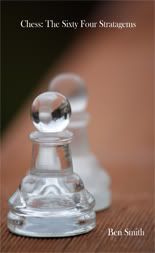We all want to be alone from time to time, to escape the demands of our colleagues or the hassle of crowds. But not alone alone.
For most people, prolonged social isolation is all bad, particularly
mentally. We know this not only from reports by people who have
experienced it first-hand, but also from psychological experiments on
the effects of isolation and sensory deprivation, some of which had to
be called off due to the extreme and bizarre reactions of those
involved. Why does the mind unravel so spectacularly when we’re truly on
our own, and is there any way to stop it?
We’ve known for a while that
isolation is physically bad for us. Chronically lonely people have higher blood pressure, are more vulnerable to infection, and are also more likely to develop
Alzheimer’s disease and dementia.
Loneliness also interferes with a whole range of everyday functioning,
such as sleep patterns, attention and logical and verbal reasoning. The
mechanisms behind these effects are still unclear, though what is known
is that social isolation unleashes an extreme immune response – a
cascade of stress hormones and inflammation. This may have been
appropriate in our early ancestors, when being isolated from the group
carried big physical risks, but for us the outcome is mostly harmful.
Yet some of the most profound effects of loneliness are on the mind.
For starters, isolation messes with our sense of time. One of the
strangest effects is the ‘time-shifting’ reported by those who have
spent
long periods living underground without daylight.
In 1961, French geologist Michel Siffre led a two-week expedition to
study an underground glacier beneath the French Alps and ended up
staying two months, fascinated by how the darkness affected human
biology. He decided to abandon his watch and “live like an animal”.
While conducting tests with his team on the surface, they discovered it
took him five minutes to count to what he thought was 120 seconds.
A
similar pattern of ‘slowing time’ was reported by Maurizio Montalbini, a
sociologist and caving enthusiast. In 1993, Montalbini spent 366 days
in an underground cavern near Pesaro in Italy that had been designed
with Nasa to simulate space missions, breaking his own world record for
time spent underground. When he emerged, he was convinced only 219 days
had passed. His sleep-wake cycles had almost doubled in length. Since
then, researchers have found that in darkness most people eventually
adjust to a 48-hour cycle: 36 hours of activity followed by 12 hours of
sleep. The reasons are still unclear.
In the 1950s and 1960s, China was rumoured to be using solitary
confinement to “brainwash” American prisoners captured during the Korean
War, and the US and Canadian governments were all too keen to try it
out. Their defence departments funded a series of research programmes
that might be considered ethically dubious today.
The most extensive took place at McGill University Medical Center in
Montreal, led by the psychologist Donald Hebb. The McGill researchers
invited paid volunteers – mainly college students – to spend days or
weeks by themselves in sound-proof cubicles, deprived of meaningful
human contact. Their aim was to reduce perceptual stimulation to a
minimum, to see how their subjects would behave when almost nothing was
happening. They minimised what they could feel, see, hear and touch,
fitting them with translucent visors, cotton gloves and cardboard cuffs
extending beyond the fingertips. As
Scientific American magazine reported at the time,
they had them lie on U-shaped foam pillows to restrict noise, and set
up a continuous hum of air-conditioning units to mask small sounds.
After only a few hours, the students became acutely restless. They
started to crave stimulation, talking, singing or reciting poetry to
themselves to break the monotony. Later, many of them became anxious or
highly emotional. Their mental performance suffered too, struggling with
arithmetic and word association tests.
But the most alarming effects were the hallucinations. They would
start with points of light, lines or shapes, eventually evolving into
bizarre scenes, such as squirrels marching with sacks over their
shoulders or processions of eyeglasses filing down a street. They had no
control over what they saw: one man saw only dogs; another,
babies. Some of them experienced sound hallucinations as well: a music
box or a choir, for instance. Others imagined sensations of touch: one
man had the sense he had been hit in the arm by pellets fired from guns.
Another, reaching out to touch a doorknob, felt an electric shock.
When they emerged from the experiment they found it hard to shake
this altered sense of reality, convinced that the whole room was in
motion, or that objects were constantly changing shape and size.
The researchers had hoped to observe their subjects over
several weeks, but the trial was cut short because they became too
distressed to carry on. Few lasted beyond two days, and none as long as a
week. Afterwards, Hebb wrote in the journal American Psychologist that
the results were “very unsettling to us… It is one thing to hear that
the Chinese are brainwashing their prisoners on the other side of the
world; it is another to find, in your own laboratory, that merely taking
away the usual sights, sounds, and bodily contacts from a healthy
university student for a few days can shake him, right down to the
base.”
Why does the perceptually deprived brain play such tricks?
Cognitive psychologists believe that the part of the brain that deals
with ongoing tasks, such as sensory perception, is accustomed to dealing
with a large quantity of information, such as visual, auditory and
other environmental cues. But when there is a dearth of information,
says Robbins, “the various nerve systems feeding in to the brain’s
central processor are still firing off, but in a way that doesn’t make
sense. So after a while the brain starts to make sense of them, to make
them into a pattern.” It creates whole images out of partial ones. In
other words, it tries to construct a reality from the scant signals
available to it, yet it ends up building a fantasy world.
[Continue Reading→]
![we-are-star-stuff:
How extreme isolation warps the mind
We all want to be alone from time to time, to escape the demands of our colleagues or the hassle of crowds. But not alone alone. For most people, prolonged social isolation is all bad, particularly mentally. We know this not only from reports by people who have experienced it first-hand, but also from psychological experiments on the effects of isolation and sensory deprivation, some of which had to be called off due to the extreme and bizarre reactions of those involved. Why does the mind unravel so spectacularly when we’re truly on our own, and is there any way to stop it?
We’ve known for a while that isolation is physically bad for us. Chronically lonely people have higher blood pressure, are more vulnerable to infection, and are also more likely to develop Alzheimer’s disease and dementia. Loneliness also interferes with a whole range of everyday functioning, such as sleep patterns, attention and logical and verbal reasoning. The mechanisms behind these effects are still unclear, though what is known is that social isolation unleashes an extreme immune response – a cascade of stress hormones and inflammation. This may have been appropriate in our early ancestors, when being isolated from the group carried big physical risks, but for us the outcome is mostly harmful.
Yet some of the most profound effects of loneliness are on the mind. For starters, isolation messes with our sense of time. One of the strangest effects is the ‘time-shifting’ reported by those who have spent long periods living underground without daylight. In 1961, French geologist Michel Siffre led a two-week expedition to study an underground glacier beneath the French Alps and ended up staying two months, fascinated by how the darkness affected human biology. He decided to abandon his watch and “live like an animal”. While conducting tests with his team on the surface, they discovered it took him five minutes to count to what he thought was 120 seconds. A similar pattern of ‘slowing time’ was reported by Maurizio Montalbini, a sociologist and caving enthusiast. In 1993, Montalbini spent 366 days in an underground cavern near Pesaro in Italy that had been designed with Nasa to simulate space missions, breaking his own world record for time spent underground. When he emerged, he was convinced only 219 days had passed. His sleep-wake cycles had almost doubled in length. Since then, researchers have found that in darkness most people eventually adjust to a 48-hour cycle: 36 hours of activity followed by 12 hours of sleep. The reasons are still unclear.
In the 1950s and 1960s, China was rumoured to be using solitary confinement to “brainwash” American prisoners captured during the Korean War, and the US and Canadian governments were all too keen to try it out. Their defence departments funded a series of research programmes that might be considered ethically dubious today.
The most extensive took place at McGill University Medical Center in Montreal, led by the psychologist Donald Hebb. The McGill researchers invited paid volunteers – mainly college students – to spend days or weeks by themselves in sound-proof cubicles, deprived of meaningful human contact. Their aim was to reduce perceptual stimulation to a minimum, to see how their subjects would behave when almost nothing was happening. They minimised what they could feel, see, hear and touch, fitting them with translucent visors, cotton gloves and cardboard cuffs extending beyond the fingertips. As Scientific American magazine reported at the time, they had them lie on U-shaped foam pillows to restrict noise, and set up a continuous hum of air-conditioning units to mask small sounds.
After only a few hours, the students became acutely restless. They started to crave stimulation, talking, singing or reciting poetry to themselves to break the monotony. Later, many of them became anxious or highly emotional. Their mental performance suffered too, struggling with arithmetic and word association tests.
But the most alarming effects were the hallucinations. They would start with points of light, lines or shapes, eventually evolving into bizarre scenes, such as squirrels marching with sacks over their shoulders or processions of eyeglasses filing down a street. They had no control over what they saw: one man saw only dogs; another, babies. Some of them experienced sound hallucinations as well: a music box or a choir, for instance. Others imagined sensations of touch: one man had the sense he had been hit in the arm by pellets fired from guns. Another, reaching out to touch a doorknob, felt an electric shock.
When they emerged from the experiment they found it hard to shake this altered sense of reality, convinced that the whole room was in motion, or that objects were constantly changing shape and size.
The researchers had hoped to observe their subjects over several weeks, but the trial was cut short because they became too distressed to carry on. Few lasted beyond two days, and none as long as a week. Afterwards, Hebb wrote in the journal American Psychologist that the results were “very unsettling to us… It is one thing to hear that the Chinese are brainwashing their prisoners on the other side of the world; it is another to find, in your own laboratory, that merely taking away the usual sights, sounds, and bodily contacts from a healthy university student for a few days can shake him, right down to the base.”
Why does the perceptually deprived brain play such tricks? Cognitive psychologists believe that the part of the brain that deals with ongoing tasks, such as sensory perception, is accustomed to dealing with a large quantity of information, such as visual, auditory and other environmental cues. But when there is a dearth of information, says Robbins, “the various nerve systems feeding in to the brain’s central processor are still firing off, but in a way that doesn’t make sense. So after a while the brain starts to make sense of them, to make them into a pattern.” It creates whole images out of partial ones. In other words, it tries to construct a reality from the scant signals available to it, yet it ends up building a fantasy world.
[Continue Reading→]](http://38.media.tumblr.com/113422405ab4b4fd4f77b632d9246250/tumblr_ndvokoCkcs1qcbrp0o1_500.jpg)




 "Drunk at the matinee" is a collection of candid poetry about stupid shit that we all experience from day to day.
"Drunk at the matinee" is a collection of candid poetry about stupid shit that we all experience from day to day.







No comments:
Post a Comment